The iBasso DX340 was kindly provided free of charge in exchange for an honest review. I didn’t receive monetary or any other kind of compensation and I don’t use affiliate links. The price of the DX340 is $1699 and you can buy it from here.
iBasso Audio
iBasso is a brand with a legendary status among discerning audiophiles. Founded back in 2006, the company specializes in making digital audio players (DAPs) and portable USB DACs together with a few selected earphones and headphones.
The company uses cutting edge technology with many pioneering features that are exclusively developed by iBasso and they usually set the pace for other companies to follow. iBasso is famous for releasing high quality products that offer premium sonic experience at very reasonable and competitive prices.
iBasso DX340
With the DX160 evolving into the DX180 and the DX240 into the DX260—iBasso’s entry-level and mid-range DAPs respectively—the stage was set for the next flagship release. Meet the DX340, iBasso’s brand-new flagship DAP. The only feature it retains from its predecessor, the DX320, is the modular, swappable amplifier card system.
You can read more about the iBasso DX340 here.
Technical highlights
The DX340 departs from the traditional D/S or other usual DAC solutions as it is the first iBasso DAP to employ 128 discrete Pulse Width Modulation (PWM) Digital-to-Analog converters in an array configuration. They are arranged in a 16-stage cascaded topology, offering ultra-precise voltage control, improving resolution, and delivering the incredibly low THD+N of -119dB.
iBasso’s FPGA-Master 3.0 proprietary algorithm acts as the brain of the digital signal processing, handling clock synchronization, digital filtering, and data flow control. It allows fine-tuning of harmonic structure, including even and odd harmonics, giving users and developers precise control over the character of the sound. It also ensures bit-perfect playback while maintaining low jitter and timing errors.
iBasso has also equipped the DX340 with dual Accusilicon femtosecond crystal oscillators which provide ultra-low jitter. Moreover a professional USB receiver is used for the DAC mode which supports 32bit/768kHz PCM and native DSD512 decoding with ultra low latency.
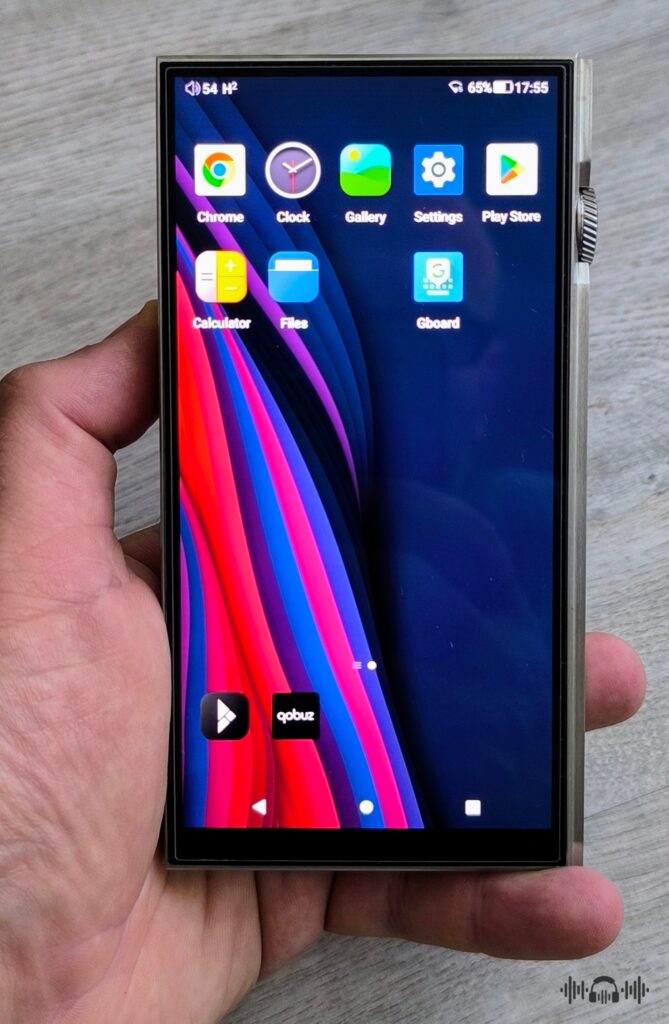
Replaceable amplifier cards
The DX340 retains the replaceable amplifier card system of the DX320 and further enhances it with the adoption of 12V external DC input. The idea behind the replaceable amplifier cards is that you can alter the sonic profile of the iBasso DX340 by exchanging the amplifier card that is located at the bottom of the device. There are several amplifier cards already available, each one with a different amplification circuitry that produces a unique sound signature. Currently, the DX340 is the only DAP by iBasso that supports interchangeable amplifier cards.
12V external DC input
The brand new amplifier cards that are specifically designed for the DX340 support 12V external DC input that increases the amplifier’s power supply from the default ±8V of the internal battery to ±12V. This feature activates the super gain mode that produces desktop-level power output allowing the DX340 to drive considerably more difficult loads.
The 12V DC input is exclusive to the amplifier card and should not be confused with the battery bypass mode that is also supported by the DX340. This means that in order to activate the super gain and enable the battery bypass modes at the same time, you will need to have two different external power adapters connected to the DX340. One 5V DC input to the charging USB port and another one to the 12V DC input of the AMP card.
The AMP15 amplifier card
The amplifier card that comes with the DX340 as a standard is the newly developed AMP15 that utilizes 8 pieces BUF634 to ensure high output ability. This new AMP card is designed to support 12V external DC input and is not backwards compatible with the DX320.
The AMP15 has both true balanced 4.4mm and 3.5mm phone outputs that can also be configured as line outputs with a fixed or variable level. The maximum output level of the 4.4mm port is 8.3Vrms (12V DC) or 6.23Vrms (battery). The output power is 2150mW*2/32Ω (12V DC) or 1200mW*2/32Ω (battery). These numbers drop to 4.2Vrms (12V DC) or 3.16Vrms (battery) and 550mW*2/32Ω or 312mW*2/32Ω (battery) for the single ended output. The signal level of the 4.4mm balanced line output is 2Vrms and 1Vrms for the 3.5mm, half than the industry standard.

Compatibility with the legacy amplifier cards
The iBasso DX340 is backwards compatible with the AMP12, AMP13 and AMP14 that were originally designed for the DX320. iBasso specifies that when using the AMP12 with the DX340, the line out works normally but there is background noise on the phone output. I have tested all the three legacy AMP cards with the DX340.
The phone output of the AMP12 does produce a faint hissing noise that is not that audible during music listening. Using more inefficient loads works better and the background noise becomes even less audible but it doesn’t entirely vanish.
The AMP13 and AMP14 function just as they did with the DX320, including the well-known issue of background hiss caused by Wi-Fi interference with the tubes. This noise can be eliminated by disabling Wi-Fi so these two cards are better used for local file playback. Please note that some noise is still audible even when using the cards in USB DAC mode.
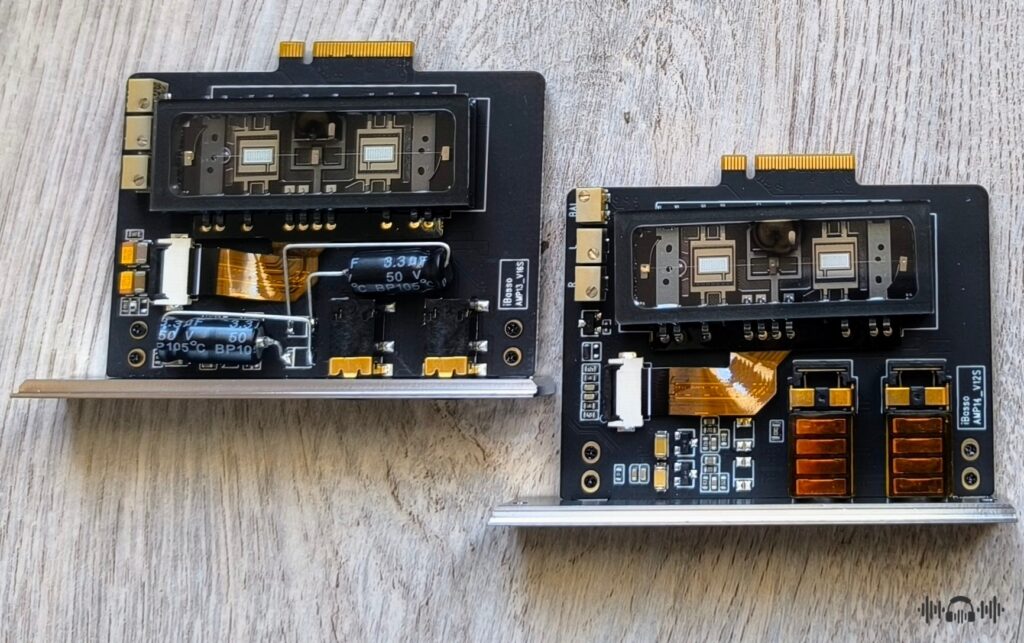
How to install the legacy amplifier cards on the DX340
In order to install the old AMP cards in the DX340 you will have to replace their faceplates with the new ones that match the chassis of the DX340 and are available as an optional purchase. There are two faceplates to choose from, one with dual 4.4mm plugs that is compatible with AMP12 & AMP14 and another one with dual 3.5mm plugs for the AMP13.
Removing the old faceplate and replacing it with the new one is an easy procedure. The only thing you have to do is to unscrew two tiny screws that hold the faceplate at the board of the card.
The faceplate package includes spare screws and a torx screwdriver. However, the torx screwdriver is for the screws that secure the AMP card to the main body of the DX340. The faceplate screws are different, they are Phillips type so you will have to find or purchase the right screwdriver. Considering that every AMP card package already included a torx screwdriver, it would be a smarter move for iBasso to include a Phillips screwdriver at the faceplate package to make our lives easier.
User replaceable battery
The iBasso DX340 is the only flagship DAP on the market to feature a user replaceable battery thanks to the removable back cover design. The only thing you have to do in order to replace the battery is to unscrew two screws at the upper top of the back and carefully remove the cover, paying attention not to break it.
Then you can easily replace the old battery with the new one without the need to do soldering because it is connected to the main board with a socket cable.
New batteries can be ordered by iBasso at a small cost and the company guarantees availability for many years after the end of the product’s lifecycle. Just consider that iBasso still stocks batteries for the DX100 which is 15 years old.

Battery duration and battery bypass mode
A unique feature of the DX340 (that was first introduced in the DX300) is its dual-battery system: a 4000mAh battery for the digital section and a separate 2100mAh battery for the amplifier section. This division guarantees the stability of the amplifier’s section power while it helps reduce interference and improves sound purity. The battery system of the DX340 is further enhanced with the implementation of a single battery indicator for simpler monitoring of its status in comparison to the DX320 that had two separate indicators, one for each battery.
The battery system supports fast charging and needs about 2.5 hours to get a full charge. The actual duration of the battery depends on the AMP card used and the working situations. With the AMP15 I was able to get about 8 to 9 hours of continuous playback from its balanced output at high gain, streaming Qobuz with the screen switched off.
The DX340 is the first iBasso DAP to support a battery bypass feature. When connected to a USB charger that provides adequate power (5V/2A minimum) the DX340 will fully charge and then override the internal battery system to operate solely on the external power source. It doesn’t matter if you have set the battery charging level to 100% or to the 80% life saving mode, it will be automatically bypassed in both modes.
Design and build quality
The iBasso DX340 follows the new industrial design language of the company that was first introduced with the DX180 and DX260 models. Gone are the rounded corners with the smooth edges across the chassis of the DX320. The DX340 has a rectangular shape with pointy corners and sharp edges while it has an odd ledge design at the back side near to the volume wheel.
Subjectively speaking, I much prefer the older design of the DX320, I find the new shape too aggressive and not that palm friendly. The corners and the edges are too sharp to handle but you can always use the high quality leather case that is included in the package.
The DX340 chassis is made from a single block of 316 stainless steel which, compared to aluminum alloy, is more durable and has better acoustic performance. The chassis is made using CNC machining procedure and is finished with a premium metallic luster. The back cover is made from plastic but its outer surface is reinforced with frosted glass.
The DX340 is an exceptionally well made DAP while much improved over the previous generation is the multifunction wheel that is more robust and offers a smoother action. The DX340 with its plain and minimalistic design is one of the most premium looking DAPs in the market.
Measuring 150×77.5x19mm and weighing a whole 486g, the DX340 is not exactly a portable friendly DAP. It is too heavy and big to fit in your pocket while it exceeds the dimensions of your palm.
The DX340 is a transportable DAP, better carried inside a small bag and also ideal for stationary use. Despite its size, it can be used with a single hand thanks to the strategically positioned multifunction wheel and the three playback control buttons.
Hardware and software
The DX340 features a hardware configuration similar to a premium smartphone. A Qualcomm Snapdragon 665 SoC, complemented by 8GB of RAM and 256GB of UFS 2.1 high-speed memory, guarantee seamless system performance. Except for the large internal memory, the DX340 also supports Micro SD card expansion up to 2TB.
The 6” screen is a 1080*2160 resolution AMOLED display that has an impressive contrast ratio, great visibility and vibrant colors. The screen is fast and responsive, it supports all the usual Android gestures while you can use double tap action to wake it.
The DX340 runs the latest Android 13 operating system that is heavily optimized for audio use without bloatware and supports SRC bypass for bit-perfect playback. Google’s official Play Store is already installed so you can download all your favorite applications.
The audio purists can switch to the iBasso’s own developed operating system, the Mango OS that is a Linux-based, audio-centric operating system designed to provide a pure and focused music playback experience. This is different from the Mango music player that you can use in Android mode.
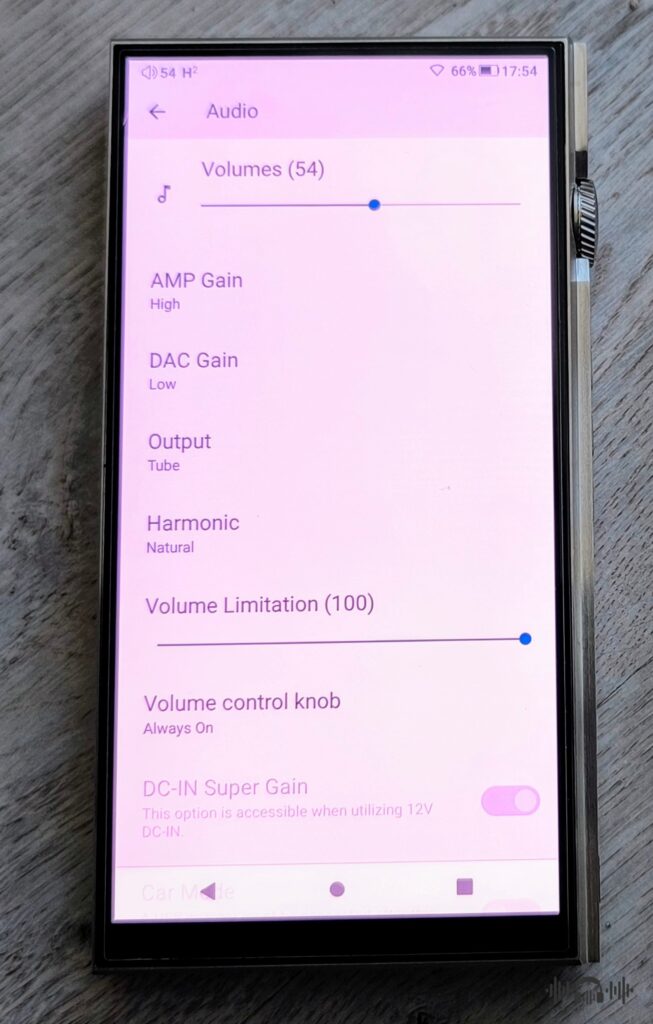
User experience
The DAP is fast and responsive, it offers all the usual Android features and customization options plus some special features like car mode, power off timer and various audio settings.
You can multitask, browse the web, watch YouTube or movies and even play games when you need to take a break from music listening. Navigation through large music libraries is fast, simple and easy. The DX340 is a DAP that offers a premium and holistic user experience, quite similar to a flagship smartphone.
Connectivity and I/O layout
The unit supports local file playback through the Mango OS or any other Android music player while you can download and use all streaming applications. Wireless connectivity includes both Wi-Fi 802.11a/b/g/n/ac and bidirectional Bluetooth 5.0 with high-resolution codec support (aptX HD and LDAC).
You can use the USB 3.1 type-C port to enable the USB DAC mode or the USB audio output functions. Please note that in order to use the USB DAC mode you must switch to the Mango OS and select this option from there. You can also select to enable or disable the charging function when in USB DAC mode. In order to use the battery bypass feature in USB DAC mode you will have to enable charging and wait till the unit gets a full charge.
Next to the USB type-C port that is located at the upper part of the device you will also find a 3.5mm dedicated SPDIF output and the micro SD card slot. At the bottom of the chassis you can see the analog audio outputs and the 12V DC input of the AMP15 or any other amp card you have installed.

Accessories
The package includes a USB cable, a high quality SPDIF cable adapter, the famous iBasso “burning” cable, a high quality leather case and several screen protector films. The case is well made, it fits the player firmly and has plenty of ventilation openings at the back.
Also included are a 12V DC switching power adapter and some spare rubber covers for the DC plug.
Power output, noise and heat
With the default AMP15 amplifier card the DX340 can produce 2150mW*2/32Ω in DC mode and 1200mW*2/32Ω with the internal battery. Plenty of power to run most headphones, especially in DC mode where the performance is comparable with many desktop set-ups. The DC input successfully bridges the gap between portable and desktop audio gear. Many users will not need to buy a separate headphone amplifier because the DX340 will suffice for most headphones except some really difficult to drive.
The AMP15 is virtually silent as it doesn’t produce any background noise, making it ideal for use with sensitive earphones. The working temperature is low and the DX340 gets just mildly warm even in super gain mode.
DAC gain adjustment
A unique feature of the DX340 is that except for the three gain settings of the amplifier (low, mid, high) you can also adjust the gain of the DAC output in two values, low and high. This is a very useful option that allows the user to mix and match the gains according to the sensitivity of the load and the AMP card in use.
As an example with the AMP14, which is more noisy than the AMP15, you can use high gain on the DAC and middle or low gain on the amplifier. This combination produces less noise than using low gain on the DAC and high on the amp. Many users may also find that each gain setting of the DAC sounds a little bit different but I leave this for you to explore.

Burning notes and associated gear
Believe it or not, both the main circuitry and the amplifier card of the DX340 need at least 100 hours of burn-in time to settle down and unlock their true sonic potential. This time can rise to a full 200 hours for the tubes of the AMP16. I suggest that you are patient and allow the DX340 plenty of time before reaching your final conclusions.
I have tested the DX340 with many different headphones and earphones but mainly the Meze Audio Poet, the iBasso SR3, and the LETSHUOER Cadenza 12 with Lavricables pure silver cables. The DX340 was tested as a streaming device, as a USB DAC and with local files while it was updated to the latest firmware.
Listening impressions with the AMP15
All iBasso DAPs are famous for combining excellent neutrality, transparency and technical performance with a sound signature that is not that clinical or sterile. The DX340 raises the bar even further to become the epitome of neutrality and fidelity without inheriting any clinical or sterile characteristics.
With the AMP15 installed, the iBasso DX340 surpasses all known competition when it comes to technical proficiency and sonic precision while maintaining good amounts of balance and musicality.
The above described sonic characteristics are usually associated with bright treble and an overall sound signature that is clinical, boring and sometimes fatiguing on the long run. Most neutral sounding DAPs I have tested tend to sound sterile and too analytical while their timbre is most of the time plagued by digital glare and artificiality.
Not without a reason though because this is an inherent characteristic of all D/S DACs especially when pushed to reach the limits of their measured performance. The sound engineers must pay special attention when designing the analog stage in order to fix these issues. Sometimes more successfully and some other times not so.
The iBasso DX340 is a different story though because the specially designed PWM DAC array decodes the digital signals in a totally different principle. Then, with the aid of the carefully tuned AMP15, it manages to produce sound with impressive neutrality and transparency but without exhibiting any of the previously mentioned side effects.
More listening impressions
The DX340 is even more neutral and linear sounding than the iBasso DX320 with the AMP11 MK2s but without the treble forwardness and the sometimes annoying brilliance of the latter. The treble section of the DX340 is stunningly luminous and energetic but at the same time smoothly polished so it doesn’t have rough edges or any kind of audible sharpness. The sound is fast and sparkling but not aggressive or cold. The treble of the DX340 is free from any sterility and the timbre is natural without a hint of digital artificiality.
The DX340 resolves the finest details and allows a deep dive inside the recording without becoming analytical like a monitoring tool. The DX340 is the perfect example that you can have class leading fidelity and precision without sacrificing musicality and tone naturalness. The player sounds musical and engaging while retaining premier technical performance like no other DAP.
The same principles also apply to the mid-range where the DX340 offers crystalline clarity and perfect articulation while at the same time it manages to capture all the harmonic variety and the colorful palette of the music. Especially when you set the harmonic filter to the H2 option which loses the academic precision of the AMP15 and makes it sound a little more relaxed and humanised. The AMP15 doesn’t particularly excel for its lush or wet textures but you can’t call it too dry or lifeless either.
A stunning quality of the DX340 is that it manages to sound calm and polite while overflowing with hidden passion and excitement. It might sound a little contradictory but it really happens.
And some more
The low-end is absolutely neutral and extremely technical. The AMP15 produces deep bass that is fast, tight and phenomenally controlled with top layering and definition. The textures are not that visceral, the bass is more technical and descriptive than flexible and elastic. You can’t call it particularly dry or thin but it is not that full bodied. It is muscular and toned but not weighty. The bass is punchy and impactful, the AMP15 can follow the widest dynamic contrasts and hit very hard, especially if you engage the super gain mode which adds desktop-like dynamics and bite.
The soundstage is both wide and deep with remarkable layering and imaging. The AMP15 may not sound that holographic or immersive but it excels in creating a very layered soundscape with stunning positioning accuracy even with the most crowded symphonic works. The DX340 can easily do justice to any headphone and make it sound as big and realistic as it can get.
The iBasso DX340 with the AMP15 is extremely neutral but it has so many options to fine tune it, that it is almost impossible not to find the right combination for your headphones and listening preferences. The truth is that the AMP15 is rather academic and scientific in the way that it sounds but it is not severely lacking in engagement and musicality. Howerer, if you like even more musicality and harmonic richness then you can switch to the AMP16.
To find out how the iBasso DX340 sounds with the AMP16 please click here to read the dedicated AMP16 review.
The harmonic filters
Unlike D/S DACs that have low pass filters that affect the impulse response of the waveform, the PWM DAC of the DX340 has a special filter that directly affects the harmonic structure of the sound. There are five settings available that are considerably more effective in fine tuning the sound than the usual D/S filters.
H1 (no harmonic adjustment applied), H2 (natural), H3 (even harmonics increased), H4 (odd harmonics increased), H5 (both even and odd harmonics increased).
What you may hear or not with each setting is pretty subjective and depends on your headphones and the music track. Generally speaking and with the Meze Poet I found that the H2 filter added more weight and harmonic richness to the sound while the timbre became more natural and organic. This is the setting to use if you want to add a touch of warmth to the AMP15 and make it sound more relaxed or get the most tubey sound out of the AMP16. None filter sounded bad and are all worth exploring till you find the best for your headphones and listening preferences.
Vs the Cayin N6iii
The Cayin N6iii is a flagship DAP with interchangeable motherboards rather than amplifier cards like in the DX340. A motherboard contains both the DAC and the analog section so each one of them has a completely different sound signature. Exchanging motherboards in the Cayin N6iii is essentially like buying a brand new DAP.
However, in the case of the DX340 the DAC section is so neutral and transparent that the amplifier card is the part of the DAP that essentially defines its sound signature. So changing AMP cards can also result in a totally different sound signature.
Unlike the DX340 where you have to use a screwdriver to remove the AMP card, exchanging the motherboards in the Cayin N6iii is a simple procedure that doesn’t require any tools. The N6iii has two mechanical latches that make swapping motherboards a simple task. The downside is that the Cayin N6iii doesn’t look as premium and streamlined as the DX340.
The motherboards of the Cayin N6iii are more expensive than the AMP cards of the iBasso DX340 and they lack the DC input feature. The Cayin N6iii doesn’t have a battery bypass mode.
The DX340 is one step up when it comes to build quality, design and the quality of the materials used. The Cayin N6iii is an exceptionally well made DAP but the DX340 has a more luxurious feeling and appearance. However, to keep things fair, the Cayin N6iii is $400 less expensive than the DX340.
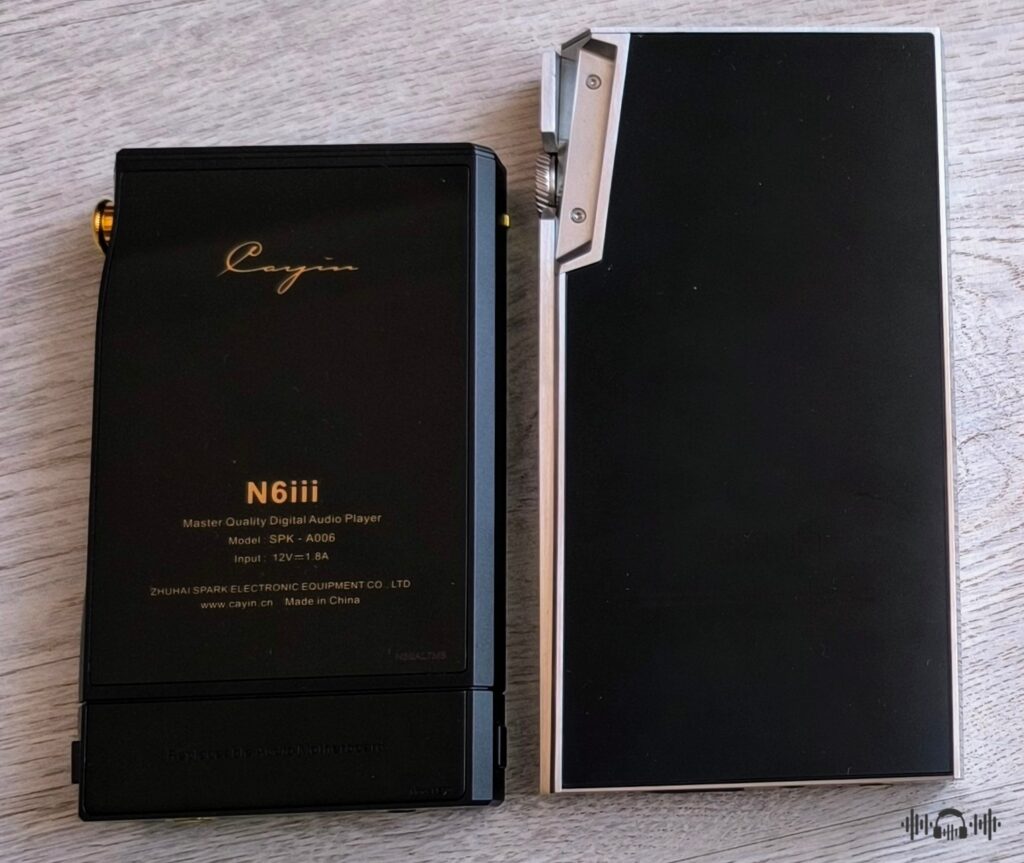
Inside these two DAPs you are going to find the same 665 snapdragon SoC but the DX340 pulls ahead with 8GB of RAM and 256GB of storage space instead of 6GB and 128GB. The DX340 has a larger 6” display instead of 5” but the N6iii is more compact (126×77.8x23mm) while it weighs 135g less. The overall user experience is on the same level, the DX340 might feel a little faster and snappier but not that much to really matter.
For detailed sound comparisons you are encouraged to read the Cayin N6iii review with the stock motherboard and reach your own conclusions. Generally speaking, the DX340 is the more neutral and transparent sounding DAP (stock configuration) but its timbre is a little more natural and free from digital glare and artificiality that are a bit present in the N6iii with the C201 motherboard. The E203 motherboard has a fuller and more organic sound that matches more with the AMP16. Still the DX340 is a higher-end DAP that can also reach desktop-level performance thanks to the DC input.
Vs the iBasso DX320
The iBasso DX320 is a very successful and excellent sounding DAP with great fine tuning potential thanks to the four legacy amplifier cards. However, the DX340 does with a more refined and natural sound thanks to its unique DAC architecture.
The DX340 has the best timbre and is totally free from the slightest amounts of artificiality and digital glare that are present on the DX320.
Interestingly enough, I have tested all the legacy amplifier cards with both DAPs and I found that they sounded at their best with the DX340. Finally, let’s not forget that the DX340 has a user replaceable battery, a battery bypass mode and the DC input that raises the bar even higher, while it is just slightly more expensive than the DX320.
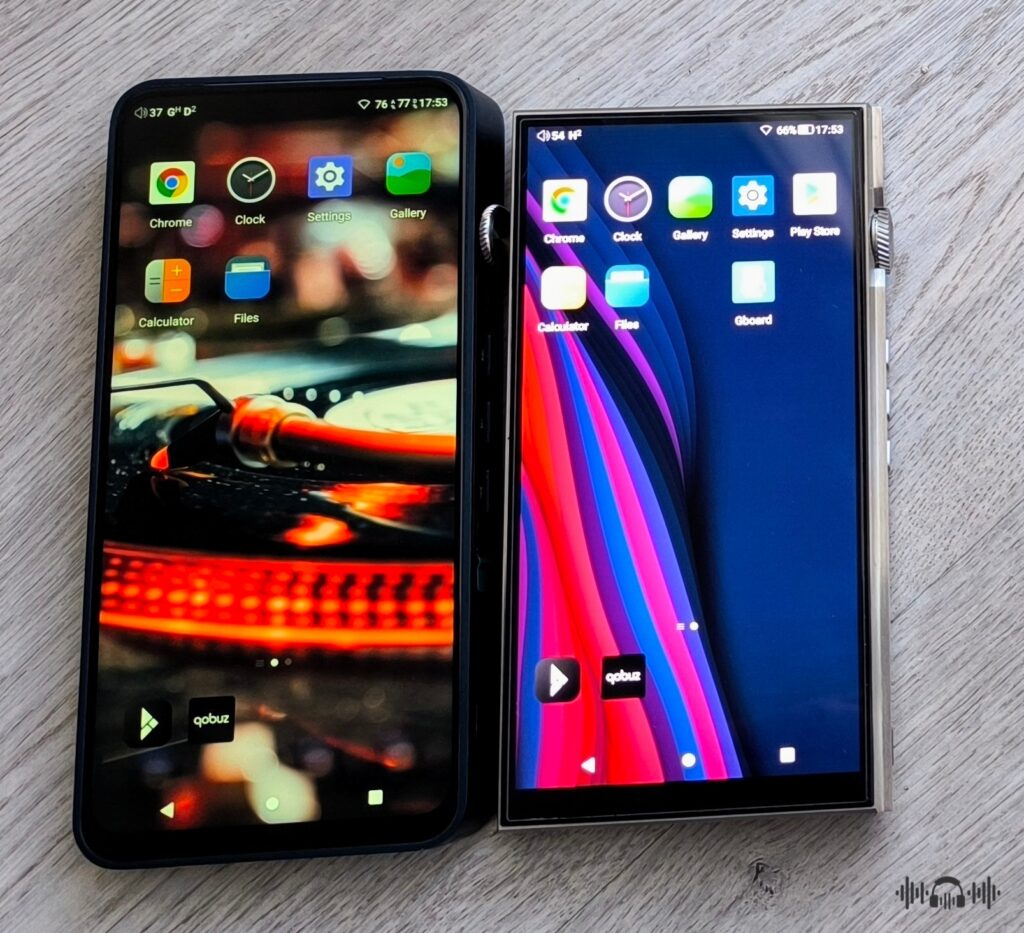
In the end
iBasso knows how to make great DAPs and improve their performance with every new generation. The DX340 is a unique DAP that embodies cutting edge technology in an innovative engineering manner not seen before.
The iBasso DX340 stands out among the competition not only for its exceptional sound quality but also for its various unique features. The DX340 is the only flagship DAP with a user replaceable battery and the first one with interchangeable amplifier cards that support 12V DC input for desktop-level performance.
iBasso has not only made a flagship DAP that has nothing to fear from – the sometimes considerably more expensive – competition, but also staying true to their philosophy, they made it very competitively priced.
I don’t know if the iBasso DX340 is the best DAP in the world (it would be too bold and rather naive to make such a claim) but what I know for sure, is that it is definitely the most affordable and best value for money flagship DAP currently in production.
Copyright – Petros Laskis 2025.
+ Class leading neutrality and transparency
+ Exceptional technical performance
+ Natural timbre free from digital glare and artificiality
+ Excellent resolution and refinement
+ Wide soundstage with stunning imaging and depth layering
+ Harmonic regulation and DAC gain options
+ Noise free performance with the AMP15
+ 12V DC input that doubles the power output
+ Replaceable amplifier cards
+ Backwards compatible with the legacy cards
+ User replaceable battery with bypass mode
+ Snappy and fast performance
+ Large screen with vibrant colors
+ Exceptionally well made and luxurious looking
+ High quality case and accessories
+ Competitively priced with impressive value for money
- Slightly lean and dry textures with the AMP15
- The AMP15 presents the music in a rather academic manner
- Needs two external power adapters for super gain and battery bypass modes
- Big and heavy for portable use
- Sharp edges and corners
- AMP15 line outputs level limited to 2V(4.4mm) or 1V(3.5mm)



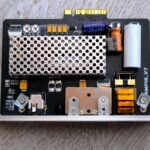

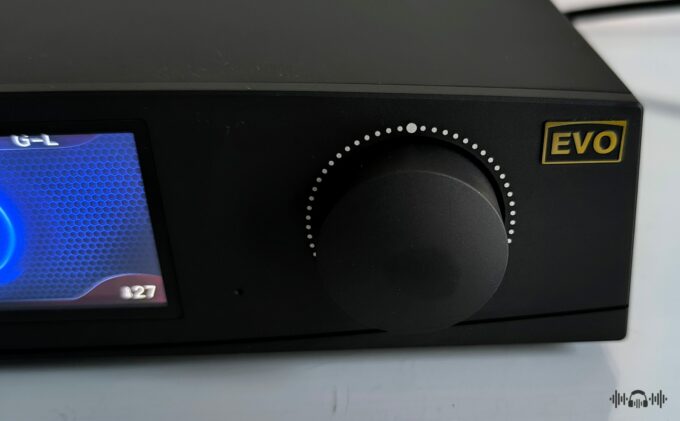

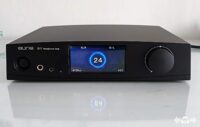


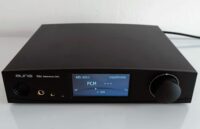
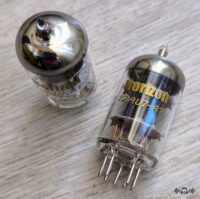
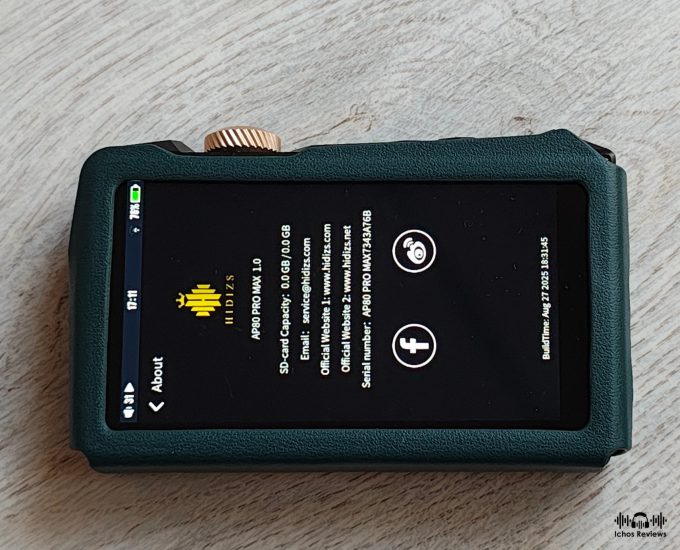
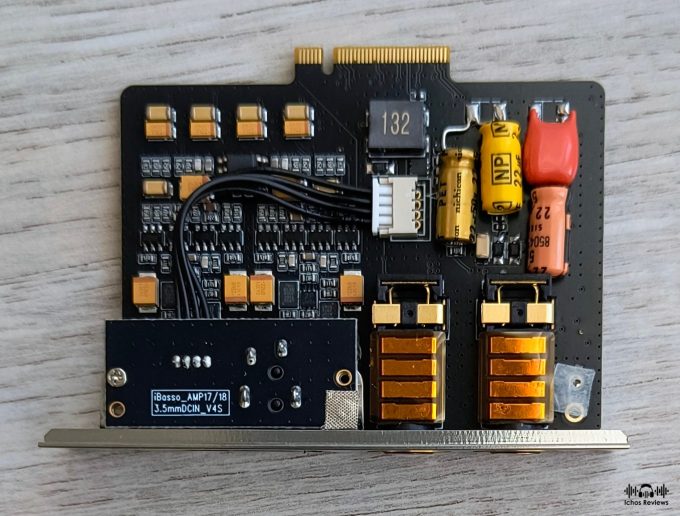
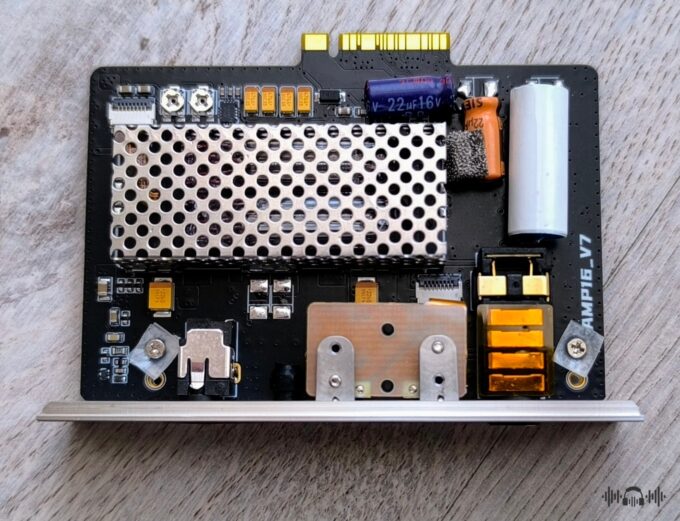
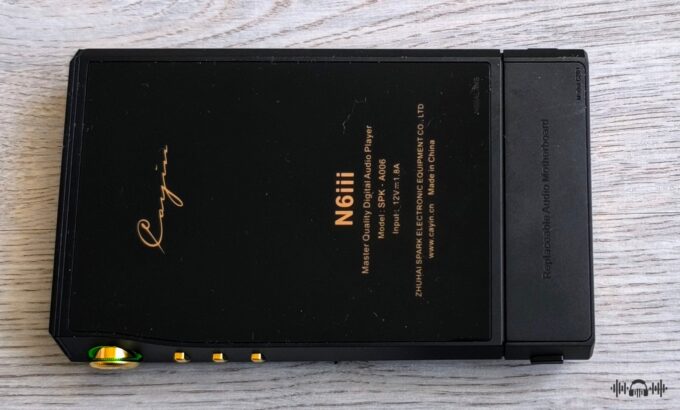

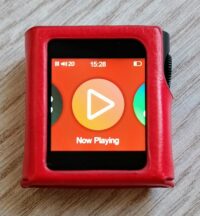
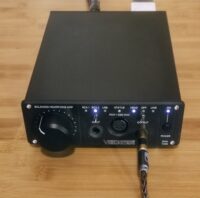



6 Comments